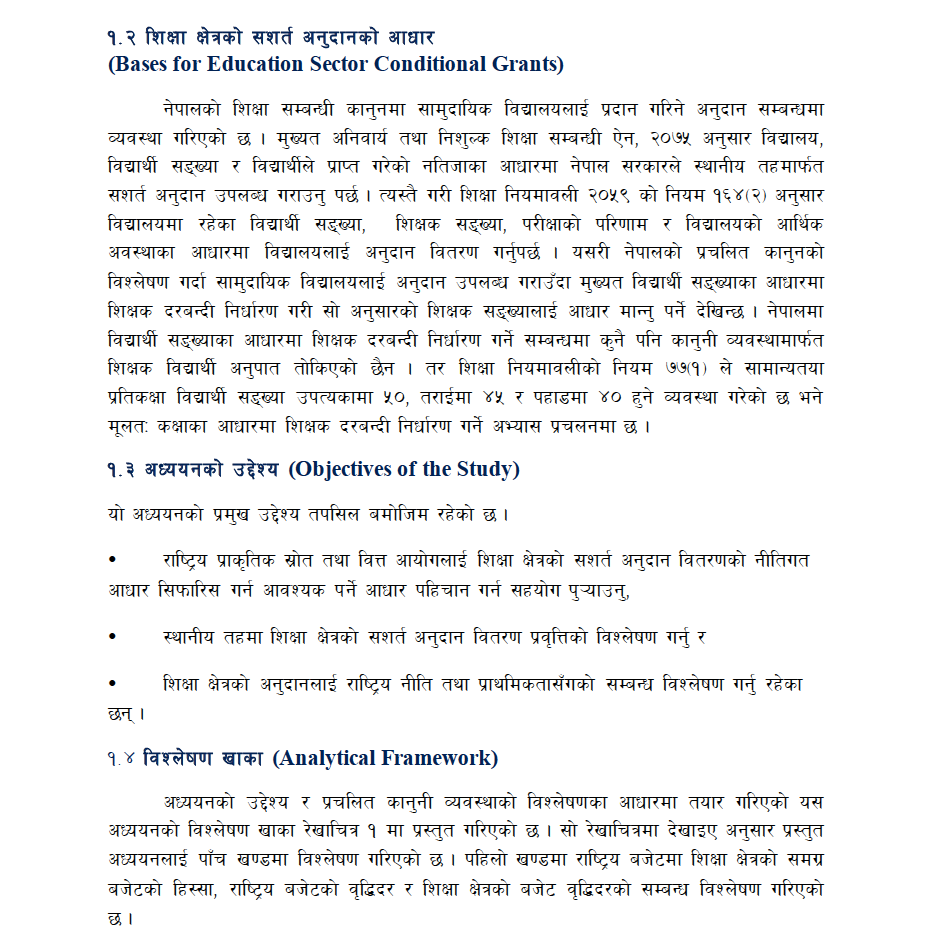The Constitution of Nepal and related laws assign the National Natural Resources and Finance Commission the responsibility of recommending the basis for distributing conditional grants from the federal government to provincial and local levels. These recommendations must consider national policies, standards, and infrastructure conditions, alongside factors such as education status, balanced development, economic or social disparities, infrastructure, local service delivery, revenue capacity, and expenditure levels. The Commission is also empowered to conduct research and studies to inform these recommendations.
In the education sector, conditional grants are guided by the Compulsory and Free Education Act, 2075, and the Education Regulations, 2059. These provisions emphasize distributing grants to schools based on the number of students, teachers, examination results, and financial conditions. Although there is no legal provision linking teacher positions strictly to student numbers, general rules suggest class size limits of 50 in the valley, 45 in the Terai, and 40 in the hills, which influence teacher allocations in practice.
The objectives of this study are to support the Commission in identifying appropriate policy bases for conditional grant distribution in education; to review trends in how such grants are allocated at the local level; and to assess their alignment with broader national policies and priorities.
